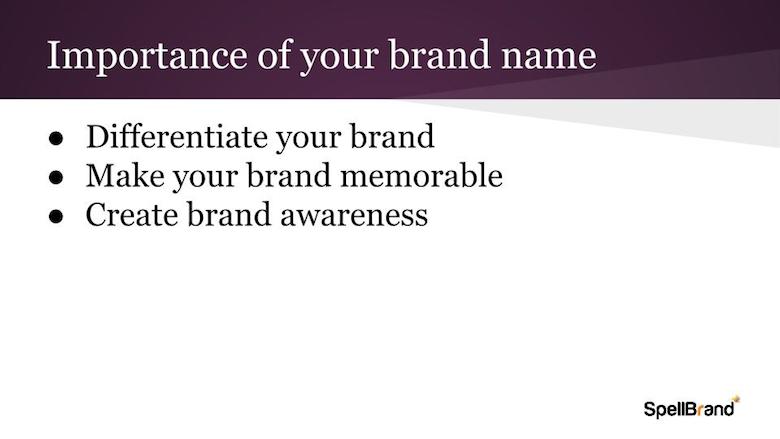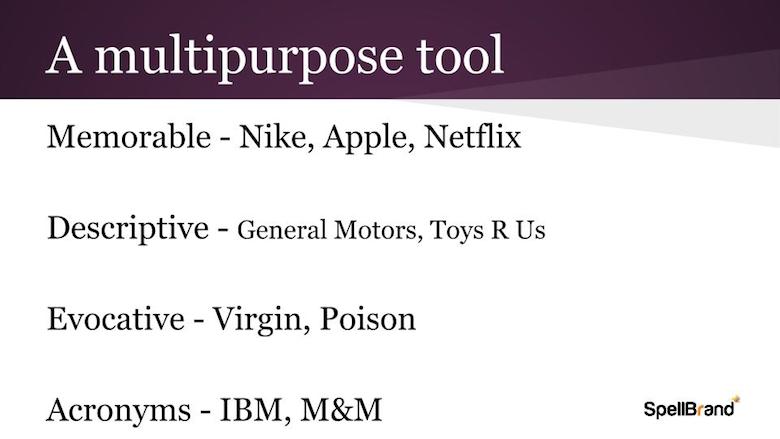When the market is noisy, there are a precious few things that can help create your brand stand out from the competition and make an impact on your target audience. One of them is having a great brand name. The others are a robust positioning strategy, an effective brand strategy, an integrated messaging strategy and a stunning brand identity.
Phew! That was quite a mouthful with a bunch of brand-related jargon that you probably did not hear before in one sentence.
Here’s the deal:
A brand name is very critical. It can make or break the initial emotion that an audience has the brand. This can lead to trust or mistrust of the brand.
So why is a brand name so important to a brand?
A great brand name can:
No single part of a brand image is as important as the name. This short phrase will be associated indelibly with your business and in many cases precede your reputation. Whether you are trying to develop a great business name or a name for a new line of products, following these guidelines can help you make the right decision.
You might be wondering:
A unique name or a generic name?
There is an ongoing debate in the business community as to whether a unique name or a more generally descriptive one is ideal. The answer to this is simple: what does your customer need? If you are offering a straightforward service or product—that is, answering a basic need—a simple name may be better. On the other hand, unique names usually make the process of branding easier and more effective. You should first and foremost be meeting customer needs and communicating this with your name.
Sometimes that is not possible. This could be either because your market segment is competitive and so saturated that most simple and generic names have already been taken. Or it could be that a simple or generic name may make it very difficult for you to trademark the name and protect your brand asset.
In that case, going for a unique name makes sense.
However, I always advocate a unique name. This is because I truly believe that no matter what your product or service is, your brand should be above the product/service threshold and must have a core and essence that makes the brand an entity. The upside with this idea is that your brand can grow and expand without the need for the brand to change and be redesigned.
Let us start by looking at some brand names and how effective they are. This will enable us to get an insight into what makes a brand name great.
While you are here, check out some awesome brand names for sale!
THE BORING COMPANY
Elon Musk’s latest venture has a very humorous name that is also self-deprecating. For a company with such huge ambitions – to bore a tunnel system for high-speed automobile travel, the name is almost childish and evocative.
This shows that sometimes, it is ok to infuse humor into the brand and not to be too serious about your brand. But I would not recommend this strategy for new startups with limited resources.
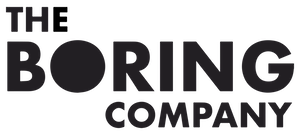
OLLIE
Ollie, an online dog food company, has a name that at the same time sounds like a dog’s name and perhaps a person’s name. It sounds like a common pet name but at the same time, it sounds unique. In the world of dog food brands, this is most definitely a fresh name that creates brand recall.
This show that going for a fresh new name that bucks the trend can sometimes work really well.
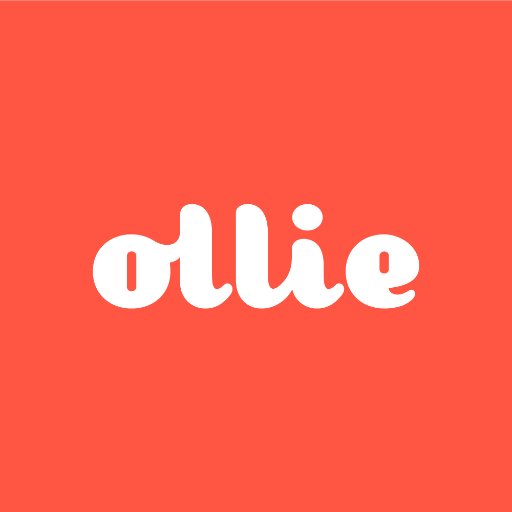
TESLA
Another of Elon Musk’s companies makes the list. This name is just awesome! It sounds great, technical and rolls off the tongue easily. It also brings heritage to the brand even though when the brand was launched it did not have any heritage. Named after Nikola Tesla, inventor of the induction motor and the AC power transmission, this brand name announced to the world that electricity was the star of the show.
This shows that sometimes, you can bring heritage to a brand through the sheer power of the name.
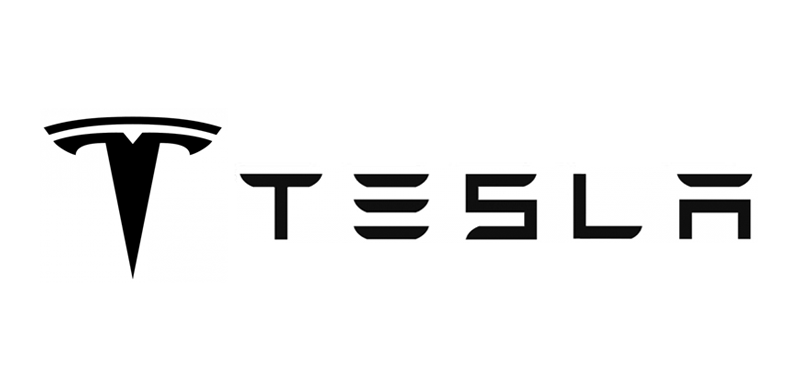
CANON
Canon started its brand life in 1933 with the name Precision Optical Instruments Laboratory. A couple of years later the name was changed to “Canon” after the company’s first camera, the Kwanon which is the Japanese name of the Buddhist bodhisattva of mercy.
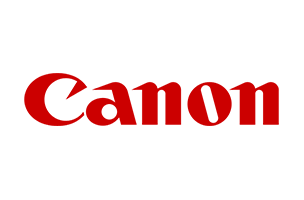
ELEGORE
Elegore is an Indian fashion brand for whom SpellBrand created the awesome brand name. A beautiful and elegant brand name that suggests the client’s customers chose the best from life and live life to the fullest. The brand supports this aspiration.

CIBO House
Another client of SpellBrand, CIBO House is an Italian bistro in Hyderabad, India serving contemporary Italian fusion cuisine. After much research and brainstorming, we came up with a series of brand names from which the client chose the final one – CIBO House. “Cibo” in Italian means food and we wanted to hint at an “eating house” or “eatery”.
As you can see, going for unique brand names can be such a game changer. They not only help create brand recall but also give the brand depth and meaning.
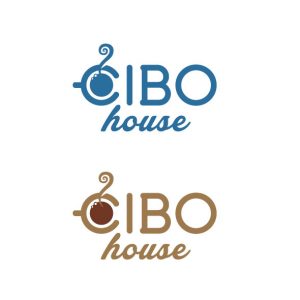

Criteria for a perfect brand name
Before we even get into the process of creating the perfect brand name for your brand, let us first look at what makes a brand name perfect.
If a name hits at least 80% of these criteria, then you can be sure that the name can be a winner.
The name should be easy to pronounce
This is the first criteria for a perfect brand name that most people look for and is usually a good one. However, sometimes you can ignore this criterion if you are in the tech or startup scene. Some examples of brand names that are not particularly easy to pronounce but have been a huge hit are
- Moschino
- Ocado
- Givenchy
- Yves Saint Laurent etc.
Easy to spell
Again this criterion is a tricky one. In most cases, you would want your brand, product or service name to have an easy spelling but sometimes, you can get away with the opposite. Here are some examples of popular successful brands with hard spellings:
- Volkswagen
- Louis Vuitton
- Bvlgari
- Huawei
- Chevrolet
- Tag Heuer etc.
Unique in the market
This one is non-negotiable in my opinion. Your brand name should not be used in the market and preferably in similar or complementary markets. There are some exceptions to this rule that some major brands out there have taken. Examples are
- Alphabet (the new company that Google launched as the umbrella brand)
- Tesla (while this may sound unique, it is actually a word that represents the famous inventor as well as the SI unit of magnetic flux density) etc.
Sweet & Short
This is another criterion of a perfect brand name that I support a lot but one which is the most challenging. With over 30 million registered businesses in the USA itself, it is hard to come up with a short and sweet name that is also unique and with a domain name available. Yes, this is a sticky one!
Easy to recall
Every brand name should strive to have a brand recall. Of course, the rate of recall is not entirely dependent on the name itself. There would be many factors that determine the recall rate of a brand name including how well it is marketed and the kind of market segment.
Not have unintended or negative meanings
A very important but a very tricky criterion. Great care should be taken when selecting a brand name – especially if your brand will be accessible globally. Unintended and negative connotations in other languages and cultures can spell the death knell. Examples of brand names that have fallen to this challenge are
- Pee Cola (a Ghanian cola brand which means “a very good cola” locally but entirely different in English)
- Lumia (the smartphone brand name means prostitute in Spanish)
Go beyond the product or service
One of my favorite criterion. At SpellBrand, when we create perfect brand names for our clients, we always try and make sure that the name is not tied tightly to the product or service. This will give room for the brand to expand and grow and still have a relevant and powerful brand name with heritage.
Available to trademark
A very important and critical criterion. Any decent brand should protect its brand name and identity with a trademark. This is becoming increasingly difficult as more and more names are being trademarked.
Top level domain name available
The last but not the least, this criterion is where most brand naming exercises bog down. With over 340 million domain names already registered, you can imagine how difficult it is to get a domain name that hits most of the criteria above and still is available as a domain name. But having a top-level domain is critical.

Different Type Of Brand Names
When creating brand names, it is necessary to understand the different type of brand names that can exist and what each category means. Broadly speaking there are four types of brand names
1. Descriptive Names
Descriptive names typically tend to be literal and describe the service or product value. These can also be called functional names and may sometimes also include the names of the founders.
The pros with these type of names are that they are easy to understand and quickly let the audience know what the brand is about. There is rarely any confusion as to what the business might be about.
The cons with descriptive names are that they may come off as generic and would have a tough time with trademarks, domain URLs, and social media handles etc.
Examples: General Electric; General Motors; Tony Robbins.
2. Invented Or Made up Names
Typically invented names are either created from Latin/Greek other such roots and could be based on mythology etc or created from rhythm and alliterations.
The pros with invented names are that 9 times out of ten, they are unique and can be easily trademarked. They also facilitate great brand recall.
The cons are that sometimes it may take an effort to make sure the audience understand what the brand represents.
Examples: Agilent, Accenture, Skype, Google
3. Experiential Names
Experiential names are tied to human emotions and experiences and can relay directly the benefit the audience can expect from the brand.
The pros are that these names communicate the brand story and set the perception easily. They can create an emotional connection easily and in an intended manner as per the brand or positioning strategy.
The cons are that since they are so commonly used in various sectors, it may become hard to trademark them. For example, names like Explorer, Navigator, and Safari are web portal names and are also the names of SUVs. This can sometimes make them look common.
Examples: Outward Bound, Netscape, Explorer
4. Expressive Or Evocative Names
These names are all about positioning the brand rather than any indication of the product or service or even any kind of experience. These names are also sometimes out of context and can create a negative connotation which may suit the brand if their strategy is aligned with such a connotation.
The pros with evocative names are that they are usually very unique and can differentiate the brand powerfully. They can also launch the brand into larger than life positioning.
The cons are that if not aligned properly with the positioning strategy, they can look completely out of place and odd.
Examples: Virgin, Apple, Yahoo!, Target, Oracle, Caterpillar

How to create the perfect brand name
Now that we have looked at the different criteria that a perfect brand name should abide by as well as the different types of brand names, it is time to get down to the process of creating the perfect brand name for your brand.
Step 1: Positioning Strategy
Always start with your brand positioning strategy. Most business owners pick a brand name first and then work on the brand or positioning strategy. While this may not be a bad thing all the time, it does have an opportunity cost. If you nail down your positioning strategy first, that will then inform the brand naming process and help you come up with a brand name that would align with your core values and the brand essence.
To create a brand positioning strategy, you will have to go through the following action steps:
- An in-depth market analysis
- A thorough competitive analysis
- Defining your brand value proposition
- Create a positioning strategy
Example: We will take the case of one of our clients, a fashion, and apparel brand, for whom we were tasked with creating a unique brand name. The positioning strategy was that the brand represented the need of their target audience to choose the best in live and live life to the fullest. This is not about selling clothing or apparel. The brand strategy goes beyond the product and is aspirational.
Step 2: Word Mapping
Once you have created your positioning strategy, compile a list of keywords based on your value proposition, core values, mission or vision statement and use these words to build a mind map of words.
Work on branching the word-map and add ideas, expressions, and hints for the main words to arrive at brand story ideas. These story ideas can then used to decide whether you want to explore one or more of the brand name types we talked about above.
Example: To continue the example of our client, the word mapping had, amongst others, words like choose, select, rise, aspire, achieve, status, ambitions, life goals etc.
Step 3: Etymology
Take the story ideas from step 2 and start working on possible etymology avenues. Etymology is defined as the study of the origin of words and the way in which their meanings have changed throughout history.
For this, you may want to start with Latin and Greek roots from which you can find words that tie in with the storyline you have in mind. Sometimes you may find inspiration in Greek mythology.
Once you have a list of etymological roots you want to explore, categorize them under one or more of the brand name types we discussed above.
Example: For our client, the etymology was based around the idea of rising to the top and choosing the best in life which hit upon, amongst other, the mythology of Perseus and Pegasus. A winged horse that could take the rider anywhere they wanted in a world where mere mortals were tied down to the slow pace of land and sea travel. We chose the Latin roots ex- (“out of, from”) and legō (“choose, select, appoint”).
Step 4: Semantics
This is where you take the root words from step 3 and start working on derivatives to create unique words that have not been used before. There are a number of branches and subbranches of semantics, including formal semantics, which studies the logical aspects of meaning, such as sense, reference, implication, and logical form, lexical semantics, which studies word meanings and word relations, and conceptual semantics, which studies the cognitive structure of meaning. (Source)
Example: For our client, we took the Latin roots and after some complex semantic derivations came up with the word “Elegore” which is greater than the sum of its part. The name is relatively short, completely unique, easy to pronounce and creates a great brand recall. It is trademarkable and the domain name was available to register. We had a winning perfect brand name!!
Step 5: Compliance
Once you have a short list of names that you have derived from the above 4 steps, you need to run them through a thorough compliance process of checking for conflicting trademarks, domain name availability, check for negative connotations in a Global setting, availability of social media handles and saturation analysis.
This compliance process will whittle down your shortlist to the final list of candidates from which you and the rest of the stakeholders in the company can make a final choice.
Step 6: Final Steps
Once the final perfect brand name is selected, you will have to register the domain and secure all the social media handles. If you had engaged an agency to come up with the brand name, make sure to get the copyright transferred to your name. For the domain name, register as many top-level domains as possible (.com. .net, .co, .biz, .usa etc) and also register variations of the name such as misspellings etc.
Finally, get started with creating an awesome logo design and brand identity for your brand new name!
Effective Brand Naming Tips
Brand naming is quite a critical aspect of your understanding of how to enhance your brand. Of course, if you’ve already got a brand name, if you’ve already named your company, you’re already in business, there is not much you can do, but this episode probably would help the companies that are starting out, and are in a start-up phase, and are looking for some help with getting a brand name created.
First, let’s talk about the importance of your brand name. Now, most companies, most businesses are tempted or rather the natural progression would be that you’d pick a name that is quite straight forward. Possibly has components of maybe your name or the stake holder’s name or a service-oriented name and so on and so forth.
Importance of your brand name
However, before picking a name that comes to you naturally, there are a few things that you are better off thinking about to have an effective brand name. Let’s start quickly with the importance of brand name, your brand name helps you differentiates your brand, of course, this’s quite obvious, but more than that, it actually makes your brand memorable, and therefore, it pays to put some thought into it, to try and come up with a brand name that actually enhances the memorability, and creates brand awareness.
A Multipurpose Tool
You’ve to look at the brand name as a multipurpose tool and there are different categories of brand names that you can focus on, for example,
- ‘Do you want your brand name to be memorable?’ – examples are Nike, Apple or Netflix.
- You could go for descriptive brand names – examples would be General Motors, Toys R Us
- A third type could be evocative names that create a kind of reaction and almost bordering on negative marketing – a great example is Virgin or Poison perfume which are non-traditional and so on
- Or you could go for acronyms – examples are IBM, M&M.
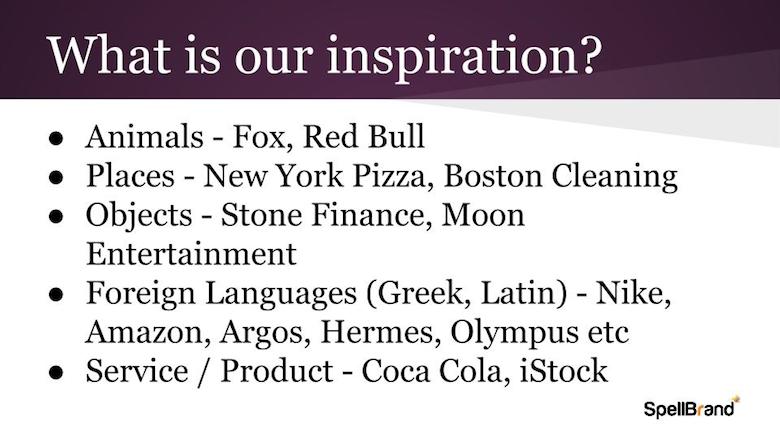
What is our inspiration?
So when you start thinking of coming up with a brand name, you got to think about the inspiration behind your brand.
- Companies can take inspirations from animals, in terms of their brand names, for example, Fox, Fox News and so on, Red Bull could be another example.
- Or it could be placed, for example, New Your Pizza, Boston Cleaning Services, etc. So, if you feel that your location would add value to your brand, then you could add the location name, the place name to your brand. You need to, however, consider that if you’re trying to target the national market or even the international market then you got to think twice about putting a place name, in your brand name, it would limit you a little bit in terms of your geographical location.
- You could also look at objects and use those in your brand name, for example, Stone Finance, Moon Entertainment; I know these are very simple examples, but I just want to drive home the point of picking objects and using them in your brand name.
- A very popular, especially now, way of picking a brand name is to look at foreign languages – Greek, Latin derived names. Famous examples are Nike, Amazon, Argos, Hermes, Olympus, there’s a ton of other examples. If you look at the Fortune 500, a lot of those names are derived from Greek or Latin and it’s a great way of picking a brand name. When we work with a client, we usually have this as one of our primary sources of picking a brand name.
- Finally, you could also do a direct service or product oriented names such as Coca Cola, for example, istock which are directly related to the service or product.
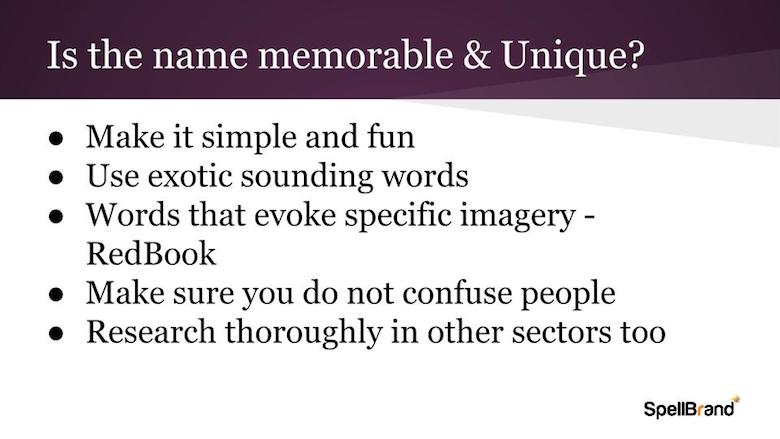
Is the name memorable & unique?
Once you pick a list of names, you got to think about their memorability or their uniqueness.
- Make it simple and fun – simple words, fun words are memorable.
- Use exotic sounding words – these could really become unique; these could create a brand recall which is instant recognition.
- You could also use words that evoke specific imagery, like Redbook and the first thing that comes to mind is, of course, a Redbook. But then you got to be careful that you do not confuse people with your brand name, and not only in terms of the choice of words but also you got to make sure that you don’t name your brand very close to something that’s already in your market segment or in your industry. In fact, you should research thoroughly in other sectors or in other markets and other industries to make sure that there isn’t a brand name that is similar to what you’re picking.
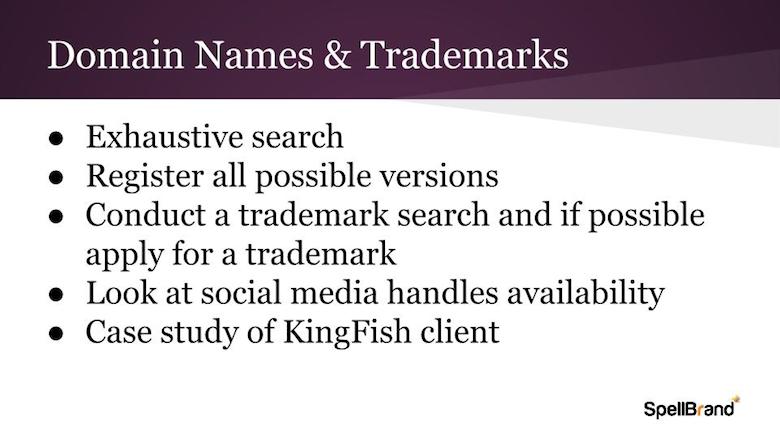
Domain Names & Trademarks
Finally, when you’re picking brand names, you got to really think about domain names and trademarks. Now, the biggest problem these days for companies starting out is picking names which have a domain availability.
Now that everybody and their dog has a domain, it’s very difficult to get good domain names, and if you do find your domain name available, register on possible versions; register the ‘.com’, the ‘.net’, the ‘.org.’ and all the top level TLDs; also different versions, for example, you have Redbook, so, your Redbook.com, Red-book.com and even misspellings; otherwise, you might have domain squatters who’d register those domains, and then, you’d have a difficult time trying to get those and they could be misused. Very importantly, you need to conduct a trademark search, and if possible, if your budget permits, even apply for a trademark for protection.
I’ve done a video on trademarking in the past and I cannot emphasize enough the importance of conducting a trademark search. We had a client who invested a lot of time, effort, money getting their brand developed in 2013. In fact, we created their logo, their marketing strategy, their brand identity and just before they went live with their brand their attorney advised them that there was someone using that brand name in a similar market segment and were geographically very close to where they were.
So they had to ditch the brand name and the entire brand. They lost time, they lost effort, they lost money – all the investment went into building up that brand was lost.
Social Media Handles
Finally, you should also look at the availability of social media handles, so Facebook, Twitter, Google+, etc. The handles are very important when you are picking a brand name. You need to make sure that you pick a brand name that is available; otherwise, you’ll then have confusion, and conflict and, possibly even trademark infringement issues down the line.

